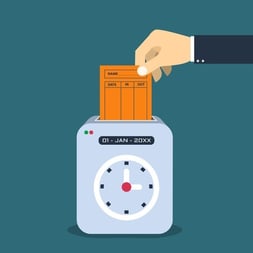 If you’re used to the world of pen and paper timekeeping or spreadsheets, transitioning to an automated time tracking system may seem daunting. But it's a lot easier than you think and delivers a whole host of benefits.
If you’re used to the world of pen and paper timekeeping or spreadsheets, transitioning to an automated time tracking system may seem daunting. But it's a lot easier than you think and delivers a whole host of benefits.
In order to make the most of it, you need to understand how the systems. That helps managers and employers better utilize the system and ensure they reap the full benefits of its implementation. Read below to find out more!
Simple Interface for Employees
While most people consider themselves tech-savvy, there is still a subset of employees who aren’t comfortable with technology beyond basic computer literacy. When purchasing any piece of software, companies need to take these employees into consideration. Purchase an easy-to-use interface and employees can be competent with a five minute training session. Purchase something more involved and that system may never be used to its full potential because employees simply don’t understand it.
Automated time tracking is just as simple as punch cards or time sheets. Employees are issued a badge or create a biometric log in. They just need to use that identification as they enter and leave the workplace. It’s that simple. Employers don’t need to spend hours and days training employees. A five minute orientation to the system is all employees need.
Instant Feedback
Automated time tracking provide instantaneous feedback for employee attendance which can help busy managers keep accurate employee records and better track their workforce. Once an employee has clocked in or out, that information is logged onto the system and can be easily read and accessed by management, HR, and payroll. Clock in and out can be easily compared to assigned hours and managers alerted to frequent tardies or unexplained absences. Managers simply need to log into the system or during setup, employers can automate alerts to be emailed to staff.
Payroll Made Easy
One of the major benefits for your payroll staff is less time spent getting clarification on hours worked. Too often, managers and employees change days off, switch hours, and otherwise alter the schedule without reporting that change to the person generating a paycheck. When it comes time to decipher what hours were worked, payroll employees spend hours calling departments, asking for clarification, and changing those hours within the system.
An automated time tracking system removes many common questions asked by payroll. When an employee is present, they are logged into the system. When they are absent due to sickness, FMLA, jury duty, or any other reason, managers are able to log that absence and clarify the reason.
In-depth Reports
Traditional pen and paper scheduling makes it incredibly hard to gather business intelligence regarding timekeeping. There’s no easy way to determine when departments are overstaffed or what percentage of employees leave early on a given day. Automated time tracking systems create in-depth reports that are instantaneously generated for managers and employers.
Manipulating data is simply a matter of inputting what you need into the system. Managers don't need to mess with spreadsheets or spend hours creating a graph to present to upper management. Instead, they can access timekeeping data and print it in an easy to read format using the time tracking system.
